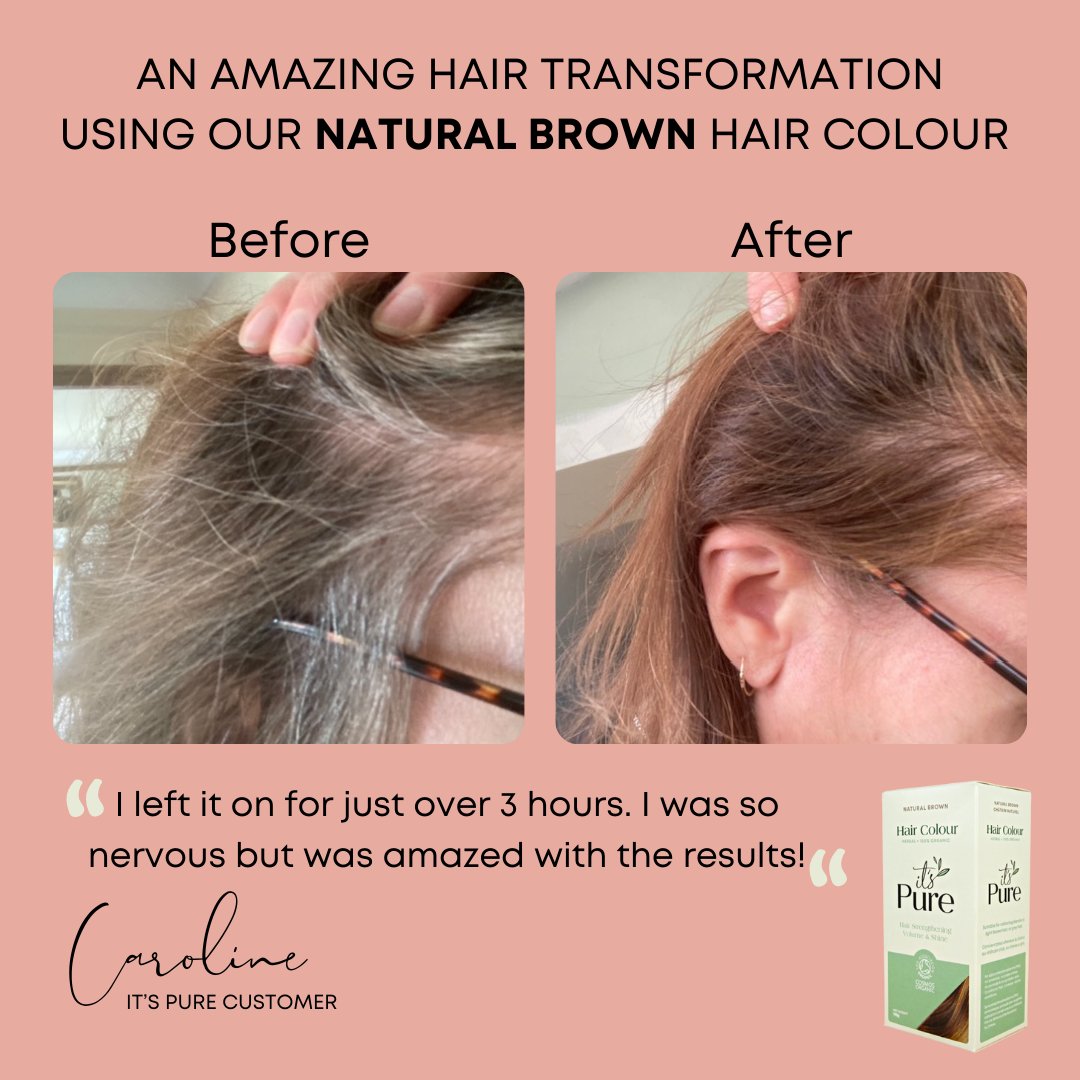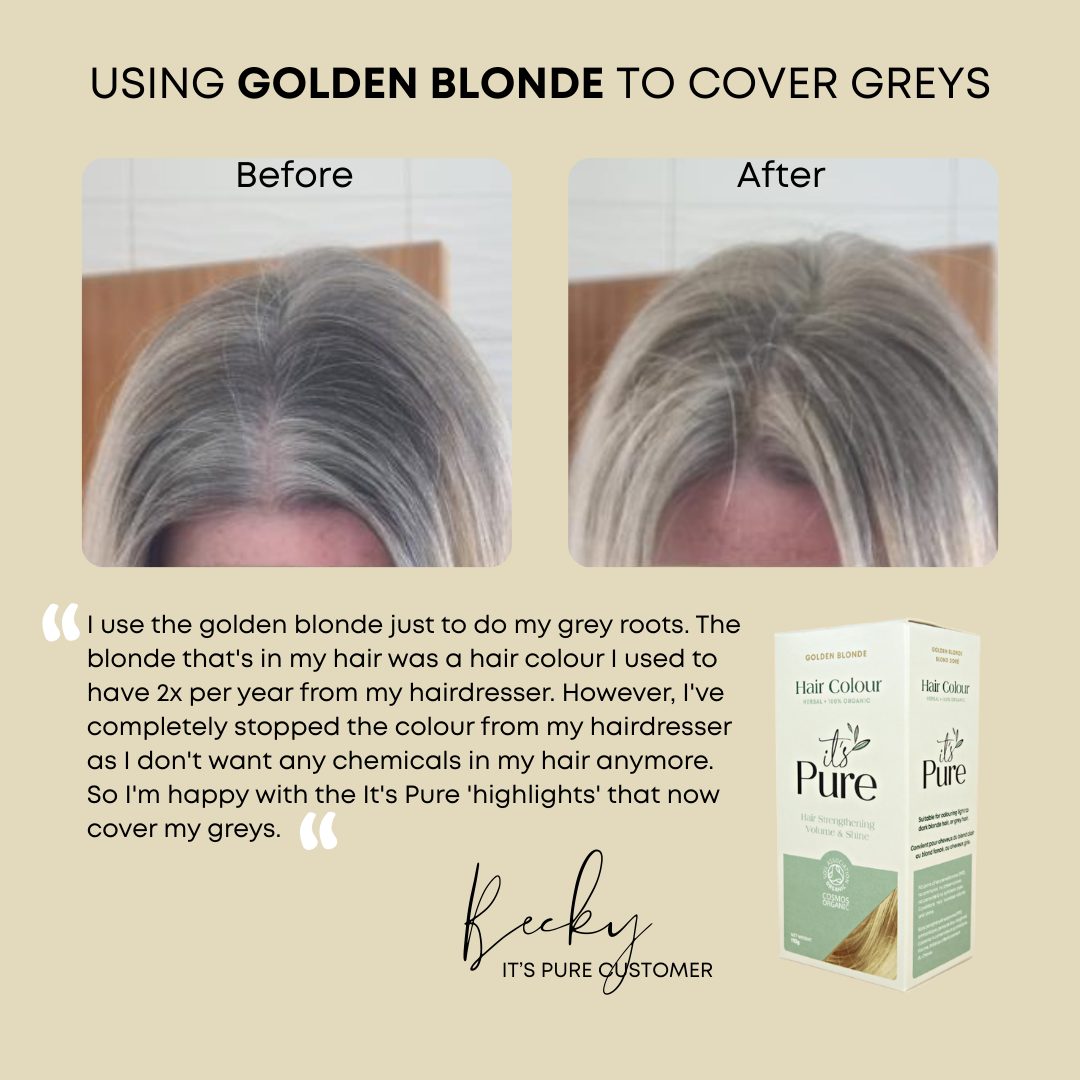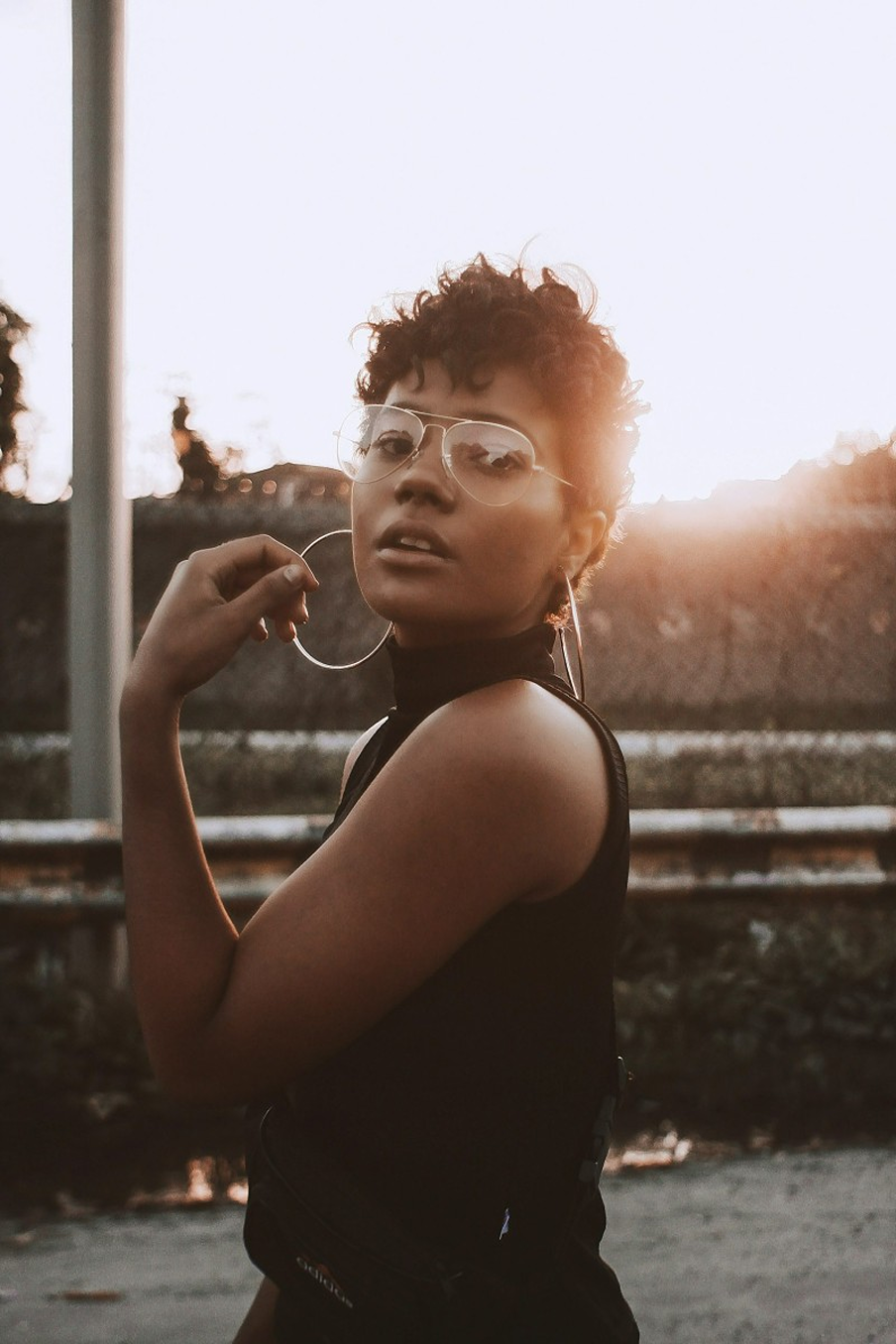The Best Brands of Natural Hair Dyes

Most hair dyes on sale these days boast of being ‘vegan’ (a few aren’t, as they contain royal jelly from bees). But the big brands are still packed with chemicals. Dark hair dyes in particular may contain PPD (a chemical that’s banned in cosmetics in some countries abroad, due to being linked to bladder cancer).
Conventional hair dyes are so toxic (sometimes making people’s faces swell up) that unless you have hi-lites (that don’t touch the scalp), most hair salons now require a 24-hour patch test, before they will even touch your head with hair dye, for fear of being sued.
Of course, you don’t have to dye your hair at all. Many people shave their hair off, go grey naturally or are just happy with the colour they have. But millions of people do dye their hair, so let’s look at better alternatives.
If you have your hair coloured at a salon, there are some organic salons that offer soy-based hi-lites and natural hair dyes. Shop around.

Henna of course is the natural hair dye of choice. This comes from a shrub (but should never be used for people with G6PD deficiency). It’s messy and takes hours to work (so take a good book into the bathroom and some old clothes!), but it does not damage hair.
You can choose auburn or dark brown (black henna is not a thing, so check the label as it may be PPD). It won’t lighten hair, and can turn blonde hair a muddled orange colour. Some brands even give off a khaki tinge at first, but this usually disappears after the first couple of washes.
Henna fades rather than grows out, so as it’s cheap, it’s a good long-term option, and can hide a small percentage of greys. It’s Pure is the best brand, which offers samples to try it out full head.

Other Good Brands of Natural Hair Dye

These are all abroad, so you’ll either have to find UK wholesalers, or order from abroad (most will send them, but you may have to pay hefty customs charges).
Desert Shadow (US) is a natural hair dye in various shades that takes 1 to 3 hours to work (sold alongside bamboo brushes).
Earth Dye (US) contains herbs to speed up hair growth (check medications before use). It also sells dyes for eyebrows and beards (also find natural beard dye at Grizzly Mountain).
Hairprint (US) was invented by an environmental chemist who turned his own grey hair back to original colour. Using a few plant-based botanicals, in 90 minutes you can restore melanin (it won’t work for red hair).
Also in a version for stubborn grey hair (use a clarifying shampoo a few days beforehand, to remove traces of silicone).
A Book on Understanding Natural Hair Dyes
Natural Hair Coloring is a beautiful book by an American beautician, who covers all the natural dyes, how to use them and how to transition from chemical to natural dyes. Includes before and after images.
Can You Lighten Your Hair Naturally?
Natural hair dyes can’t lighten hair. So visit a salon that uses organic hair dyes (salons can buy wheat straw mixing bowls and biodegradable capes.
Or naturally lighten hair a few shades using lemon or chamomile (won’t be dramatic, but it may lift a shade or two).
Understanding Natural Hair Dyes

Most hair dyes sold in supermarkets and chemists are full of toxic chemicals and sold in boxes with oodles of plastic packaging.
Hair salons now need to offer 24-hour patch tests, due to previous cases of being sued, from people using conventional brands.
If hair is damaged, it’s better to just chop your locks off, and start again. Or just embrace your natural hair colour, many are now happy at going grey.
Natural hair dyes are made with plant-based ingredients that biodegrade. Common ones are:
Henna
This is a vibrant red dye, made from the leaves of the henna plant. You have to be careful using this on blonde hair or grey hair (it can go a muddled orange).
It takes hours to work and is messy, so use in the bathroom and take a good book! It’s safe for most people, but should not be used if you have G6PD deficiency.
Indigo
This is a blue-black dye, and can be used along or in combination with henna.
Be careful in stores, as some ‘black henna’ is made with a chemical compound containing PPD (banned for cosmetic use in some countries abroad).
Amla
This is from the fruit of a tree, and is another dye used to darken hair.
Walnut Shells
These are sometimes used for brown shades, obviously not for nut allergies.
Cassia
This is from a tree bark, and used usually as ‘colourless’ henna in dyes, to improve hair condition.






